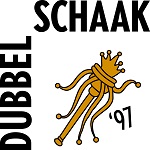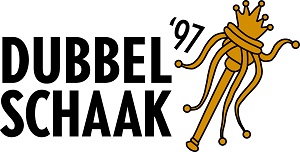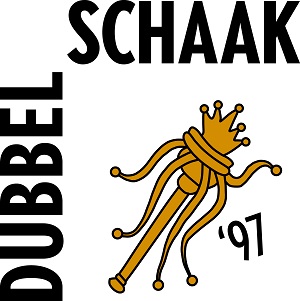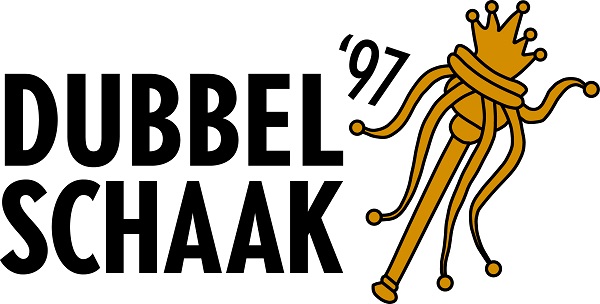De afgelopen tijd correspondeerde de Schaakridder met IM Erik Kislik, een Amerikaan woonachtig in Hongarije, voor een interview. Dit keer is het interview anders dan gebruikelijk. Aangezien Erik Kislik uitgebreide en mooie verhalen als antwoord gaf, is het interview in drie delen opgedeeld. Deze week het derde en laatste deel. Ook dit deel van het interview is in het Engels. Hieronder volgt het laatste deel van het interview met IM Erik Kislik.
9. Your second book is titled “Chess Logic in Practice” and is usable for all chess players. Could you tell us more about your second book?
I consider this second book to be a very natural follow-up to the first book, which laid out more fundamental concepts and ideas about how to work on chess and think about the game. This new book focuses on different thinking concepts, how we think about the board, the different biases we have, and the types of moves and situations that are most difficult for us to deal with during games. For instance, the book discusses logical thinking concepts, guidelines, and heuristics, as well as multiple chapters discussing facets of exchanging pieces, multiple chapters on developing your sense of danger, and multiple chapters on common game situations, like fighting against strong centralized pieces, playing with a bad bishop, playing with a bad queen, and maneuvering in closed positions, with an emphasis on pawn breaks and how to think about them. What I write about reflects what I saw neglected in chess literature as I was a developing player in the 1800 to 2400 range, and what I see regularly that is not understood all that way by my students in the 1200 to 2300 range. I also had five of my students read through the book before it was completed, and had the material vetted by IMs and GMs I know personally. With one 1700 player in particular, we went through every example in the book together in lessons. He found that to be very valuable. I think that if every author went through their books with students, had beta reading students, and had professionals peer review their work, every chess book produced would be excellent, after passing that many quality tests. In the book, I was glad that I was able to include fresh examples, for example, played by AlphaZero even, and get the entire book checked by Leela on my desktop computers. I believe the quality of the analysis in the book is very high, and it might be the first chess book fully engine-checked by an elite neural net engine. I do want to stress that at high depth traditional and neutral net engines do converge on the vast majority of moves, but sometimes engines like Leela can find dazzling and rare solutions, or simply give vastly different evaluations. This happens rarely, but one has to make sure to check their work with Leela to make sure that they do not miss exactly this kind of thing. All in all, there are many highly tactical and amazing positions throughout the book, as well as some fun evaluation exercises that I end the book on. I am very pleased with the final result, and consider the book to be readable and a page-turner for those who enjoy deeply thinking about best practices of the game of chess and how to approach common board situations.
10. Furthermore, you are an expert on computer chess. Are you still active in that expertise?
I do not refer to myself as an expert on computer chess, simply because I do not know what that means or what it entails. I studied computer science at the university, wrote my own very weak engine, and have been interested in high end computing and programming most of my life, but I always consider there to be much more to learn. For whatever reason, titled chess players seem to have close to zero deep interest in computer chess. I have never understood this, because excellent training examples for coaches and players, and great novelties can be found in a lot of the games. I follow all of the new games played by Leela, Stockfish, and neural net engines like Scorpio. I have been following the development of most of these engines right from the beginning. Curiously, I don’t think there is another titled chess player who has. The interest just seems to not be there for some reason, which really baffles me. Komodo programmer Grandmaster Larry Kaufman is too busy with his own projects to follow most of what goes on as well, but he is the only titled player I know who also seems to have a very high interest in how things develop. I did do a little bit of recent analysis of some of Leela’s games with Grandmaster Baadur Jobava, who I first met in Bosnia almost 10 years ago at a tournament, but he only really follows the TCEC SuperFinal. I would strongly encourage everyone in high level chess to follow TCEC, even if that means just playing through the decisive games once a week in the archives. I still follow everything and try to keep up with what is going on, and send suggestions to the programmers and ways to improve their engines. I wish more strong chess players would. The engines would become stronger, even if only very slightly.
11. Will you publish a third chess book in the future?
I would like to write a third book on defensive strategies and perhaps a fourth book on thinking about tactics correctly. I will very likely put up Chessable courses on trapping the queen (with 400 examples or so, which will be useful patterns even for Grandmasters to study), and one on classic games, perhaps with 400 classic games deeply annotated with Stockfish and Leela and explained in plain English. A lot of classic games needs to be re-examined and re-explored with modern tools. There is a lot to discover, and if someone wants to beat me to this task, I would be more than happy to read and promote that material.
12. What are your plans for the future?
I plan to continue making videos, writing articles and books when I have time, and coaching students. I may return to playing tournament chess in a few years and try to pursue a GM norm or two. Unfortunately, I have won 2 Grandmaster norm tournaments, got second in another, and had 3 performances over 2550, but I made no GM norms. I was a hair short each time. They are very hard to get, even with a very good Grandmasterly performance. For many players, getting the GM title is just getting in the volume of games and very slowly raising their level. I would not be able to get in a ton of volume, but I would still like to play some tournament games because I enjoy them a lot.
13. Do you have a good tip for chess players?
Of course, the boring thing to say here is, “Play a lot and analyze your games deeply” which everyone has heard many times before. Because nothing new is added by saying this, instead in Applying Logic in Chess I provided a short list of the most useful questions to ask yourself when analyzing your games, and showed how I went through my most complicated and difficult tournament games myself this way. Additionally, I think that most chess players below 2000 struggle with consolidating the center and thinking about it correctly. Far too often, players advance their central pawns beyond the fourth rank in a way that actually allows more counterplay for the opponent, rather than less. You could think of an ideal pawn center with pawns on d4 and e4 for White as a safe and restrictive center that controls the fifth rank well and restricts the opponent’s pieces and pawns. Once either of those pawns advances, pawn breaks are more likely to occur and such a pawn break could trade away the two central pawns into one, or even cause the center to evaporate completely. In other words, advance an ideal center with a purpose that you deem to be more useful than just having the pawns on the fourth rank solidly and securely. Chasing away unstable knights can be a useful thing for your dynamic central pawns to do, but even in that case, try to be confident that you gain something besides just the one tempo of chasing away a piece. We want to avoid one square attacks. Lastly, I would say that the premise of the beginner DVD I made last year with four time kickboxing World Champion Andrew Tate (and son of legendary chess player IM Emory Tate) is that chess is war. We are either progressing or regressing (occasionally there is a stalemate on the board and no one can go forward of course), and we need to know how to march forward. Most players don’t know how to do that effectively with pawns (especially carrying out pawn breaks, probing moves, and exchanges creating weaknesses), so they are not getting the most out of their smallest weapons. Think about and reflect on pawn breaks more, and try to gain a better appreciation of how to provoke and create weaknesses, especially with pawn pushes. Good luck in your chess!

Eindredactie: Anthony van Driel
Interview: Martin van Driel
Foto: Facebookpagina Erik Kislik




Laat een reactie achter